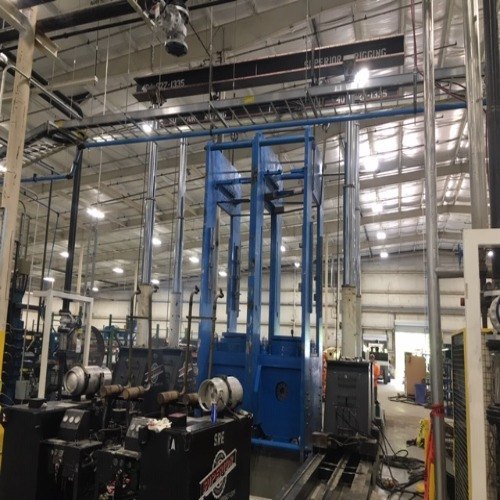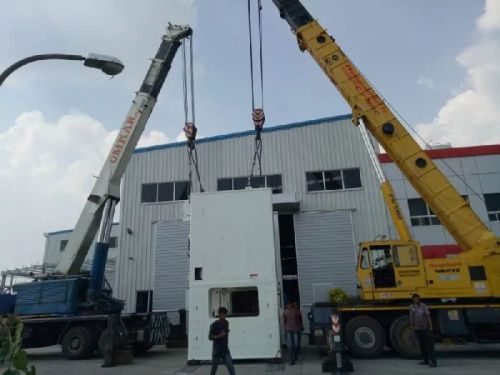Protect your equipment with these essential machine shifting tips and best practices.
Anyone who has handled a press machine, CNC, or any heavy equipment knows this – one wrong step during machine shifting, and the entire production line feels the impact. Yet most problems don’t happen because machines are too heavy or too complicated. They happen because small details get ignored.
In factories, those small details turn into big costs:
- a bolt misplaced during dismantling,
- a wire not labelled properly,
- a crate packed without vibration control,
- or a route assumed safe without checking the access.

After working on a lot of machine shifting projects across India, one thing is clear – mistakes don’t happen on the moving day; they happen long before it.
So here are the most common mistakes people make during machine shifting and what you can do to avoid them.
1. Starting the Project Without a Proper Plan
Many teams jump straight into dismantling without understanding the full scope. This leads to surprises like tight pathways, low clearances, or unsupported floors.
How to avoid it: Always begin with a detailed site study – entry points, floor load, lifting requirements, and machine dimensions. A clear plan reduces 80% of your problems.

2. Rushing the Dismantling Work for Machine Shifting
In the hurry to finish on time, dismantling often becomes the first compromise. Missing labels, mixed-up bolts, and unprotected components slow down installation later.
Avoid this by: Taking a systematic approach proper marking, sequencing, and component protection.
3. Not Using the Right Packing Methods
A machine may be strong when running but delicate when moved. Sensitive areas, electronics, and precision parts need proper packaging.
Avoid this by: Using protective materials like cushioning, custom crates, and moisture barriers. Proper packing is cheaper than repairing damage later.
4. Neglecting Load Securing
During transportation, even a slight shift inside the vehicle can cause severe internal damage.
Avoid this by: Using proper lashing, supports, and anti-vibration padding. Vehicles should match the machine’s weight and height requirements.
5. Forgetting Environmental Protection
Humidity, dust, and weather exposure can quietly ruin machine components, especially over long distances.
Avoid this by: Adding VCI protection, shrink wrapping, or waterproof covers based on machine type.
6. Not Calculating Actual Downtime During Machine Shifting
Most downtime problems come from unrealistic timelines.
Avoid this by: Planning the entire chain – dismantling, packing, loading, travel, unloading, installation, and testing.
7. Miscommunication Between Internal Teams
Operators, maintenance teams, and shifting teams often follow different checklists.
Avoid this by: Keeping everyone aligned with a simple communication plan and regular updates.

8. Skipping Final Testing After Installation
A lot of issues appear only after the machine is powered up.
Avoid this by: Doing a full inspection, alignment check, and test run before restarting production.
9. Overlooking Risk & Safety Checks
Machine shifting always has potential risks — equipment damage, human error, or logistical delays.
Avoid this by: Ensuring safety gear, proper insurance, and experienced handlers.
10. Choosing Machine Shifting Only Based on Cost
Low-cost shifting often means low expertise — and that brings higher risks.
Avoid this by: Selecting a team with experience, proper tools, and technical knowledge.
Conclusion
Machine shifting becomes smooth and stress-free when the basics are done right. You don’t need complicated systems you need attention to detail, good planning, and a team that knows the job.
